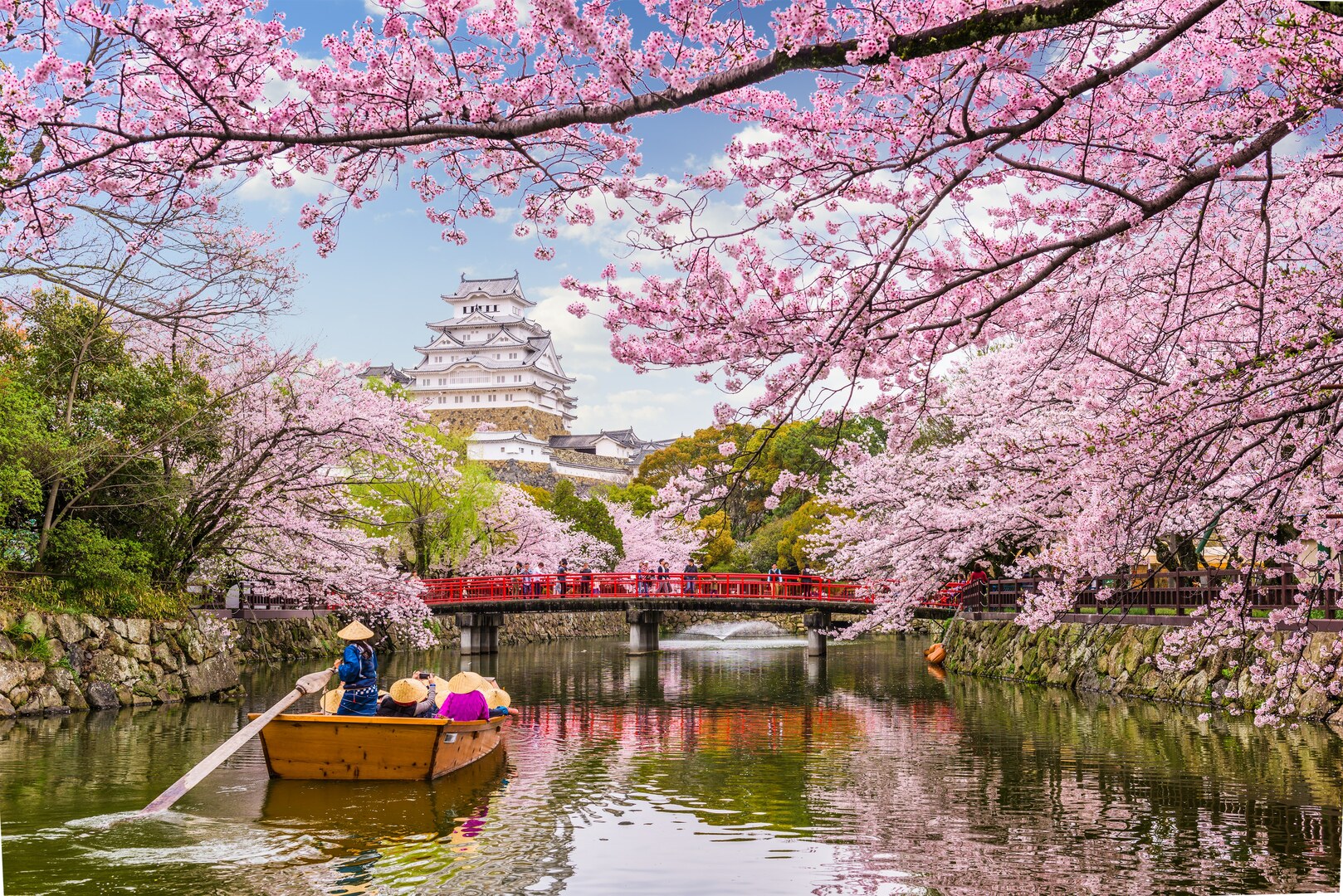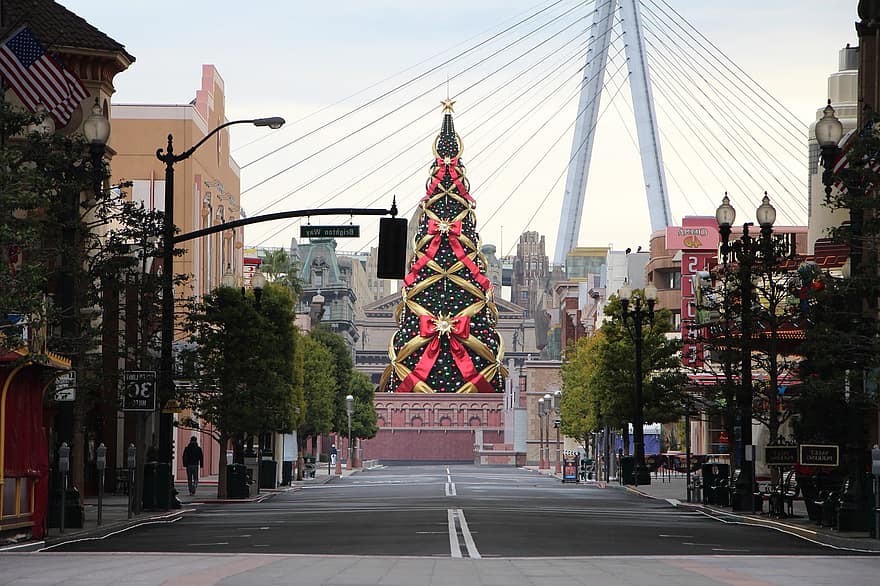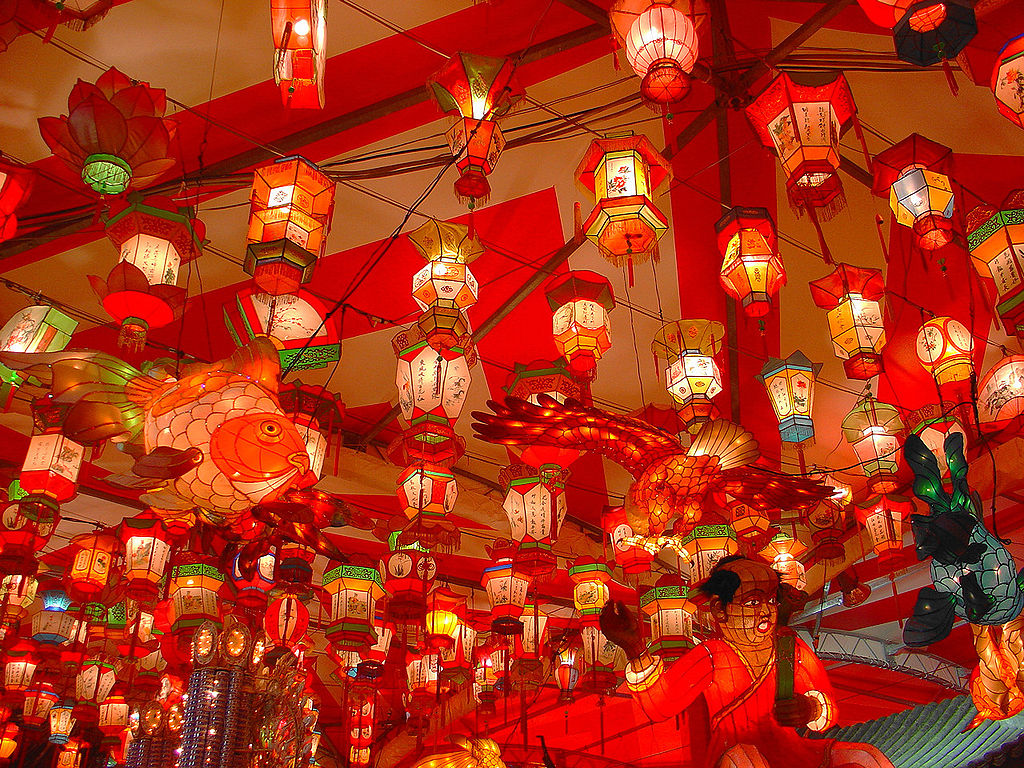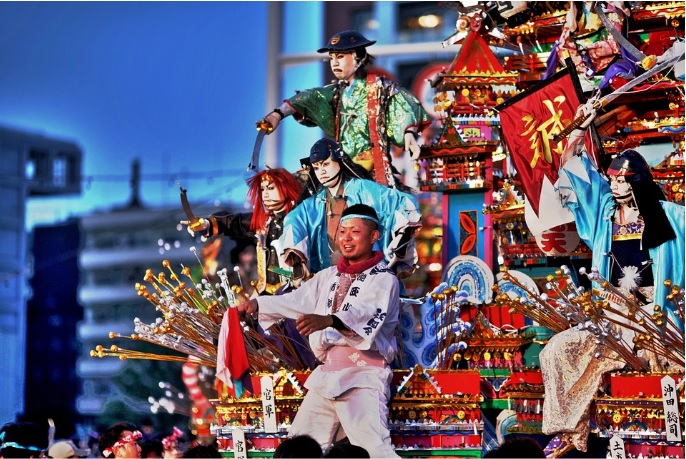The traditional clothing of Japan has always been a point of interest among its visitors. Although we can say that the country is progressing in the advancement of technology, still, many of the Japanese people clung to their traditional culture. The most popular clothing that can be easily recognized in the wide streets of Japan is the kimono.
Kimono is a traditional garment worn by both men and women. It is a full-robe made of silk which makes it comfortable to the skin. Back in the old days, kimono was worn every day by the Japanese. In the present day, kimonos can be seen during formal occasions such as wedding, funeral and traditional tea ceremonies.
Kimono for Women
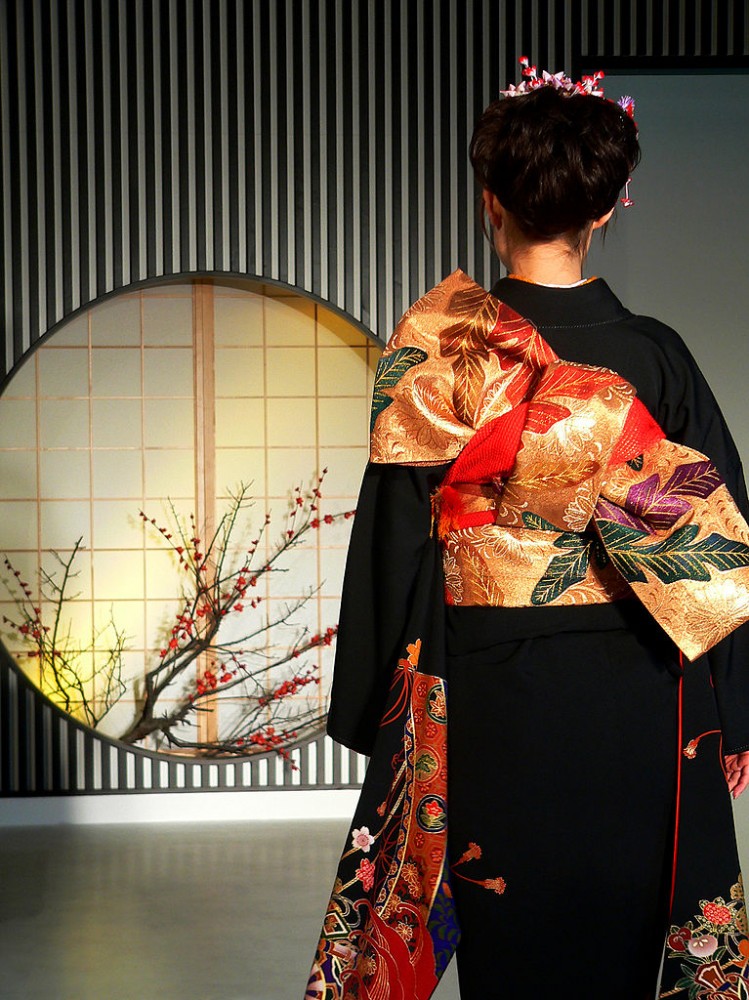
Photo by sth. Licensed under Creative Commons.
There are several kinds of kimono according to the marital status, season and occasion. These are furisodé, shiromuku, tomesode, mofuku, uchikake, houmongi, yukata and a lot more.
Furisodé is a kind of formal kimono which has long sleeves, with the length of around 110 cm. It is typically worn by unmarried women, symbolizing they are available for marriage.
Wearing a furisodé will require the help of another person. Before you consider wearing one, make sure to have the right materials.
Materials Needed:
Kimono
Nagajuban
Tabi
Obi
Datemaki
Zori
Hair Ornaments
Here are the steps on how to wear a Furisodé:
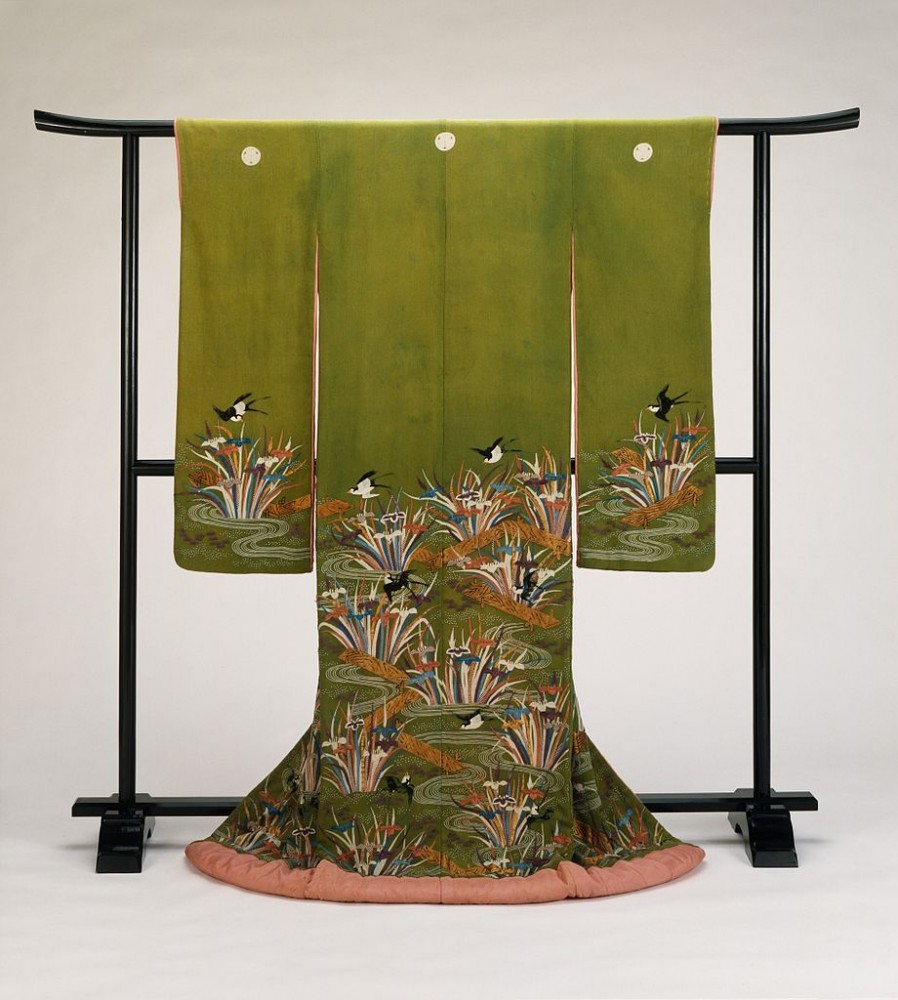
1. To start off, put on the tabi (white cotton socks).
2. Followed by nagajuban (undergarments skirt) and tie it with a datemaki (belt).
3. Then it’s time to wear the kimono. Be sure to wear it correctly with the left side over the right. Only a deceased person wears it right side over left.
4. Adjust the length of kimono by gently pulling up the fabric and so it will not touch the floor.
5. Fold the kimono down to expose the nape. The neck is considered a sensual part of a woman wearing a kimono.
6. After that, wrap the obi (sash) below the chest and tie the sash in the back, leaving three inches of the fabric hanging loose.
7. Wear zori (sandals). You can also pin hair ornaments to add style.
Kimono for Men
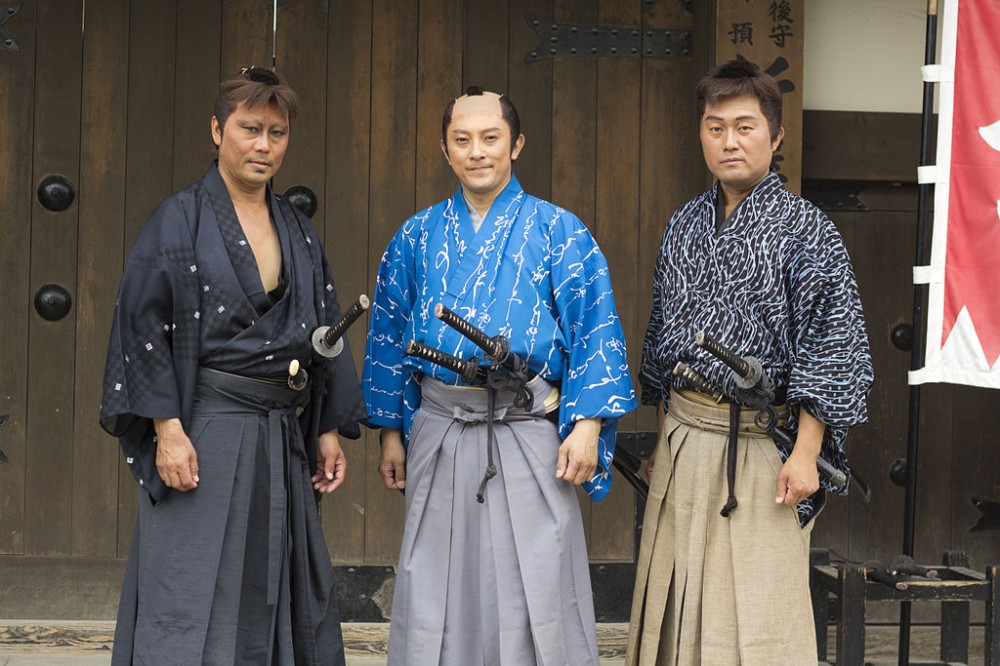
Photo by Japanexperterna. Licensed under Creative Commons.
Kimonos for men are much simpler in appearance and not as complicated as that of women’s. The sleeves of men’s kimono are already attached to its body making it easier to wear. Montsuki Hakama is the formal type of kimono worn by men while haori is an informal type of kimono.
Materials Needed:
Kimono
Juban
Hakama
Haori
Obi
Geta
Senzu
Here’s how to wear the Montsuki Hakama:
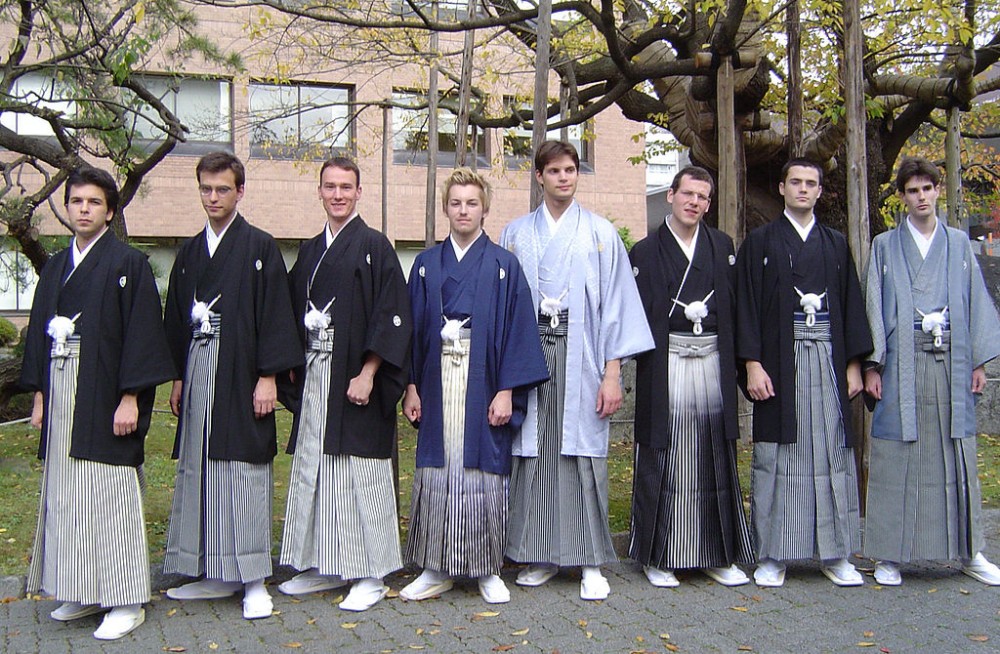
Photo by Immanuel Giel. Licensed under Creative Commons.
1. First, put on the tabi (white cotton socks).
2. Wear the juban (undergarment) and tie it with a simple obi (sash).
3. After putting on the juban, it’s time to wear the kimono.
4. While women wear their obi above their hipbone, men usually wrapped theirs below the hipbone. Tie the obi below the hipbone and make a simple knot in the back.
5. Wear hakama (trousers) over the kimono. Make sure that it will only touch the top of your feet.
6. Put on the haori (half coat) with a mon (family crest) attached to it. Family crests differ in its meaning according to your family’s belief and tradition.
7. Wear geta (wooden sandals) and add senzu (folding fan) to add style.
Even with the emergence of modern clothing, Kimono still plays a significant role in Japan because wearing one signifies the importance of keeping the Japanese tradition and its rituals.
